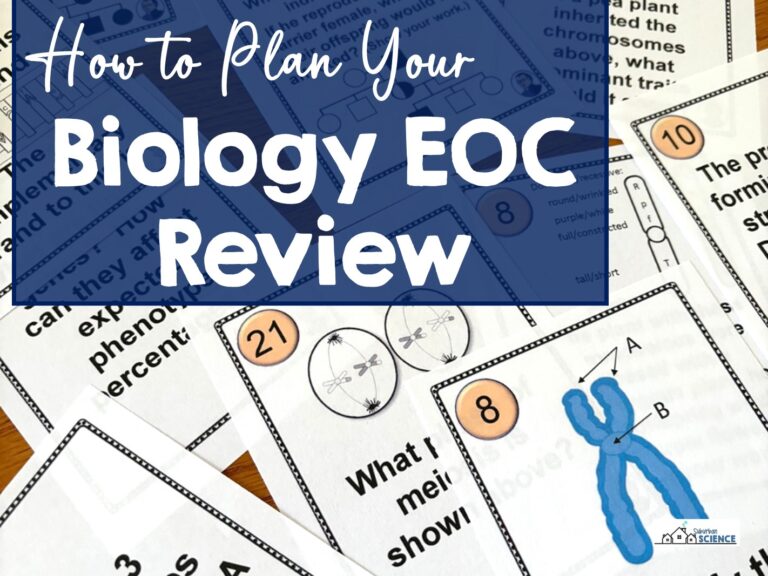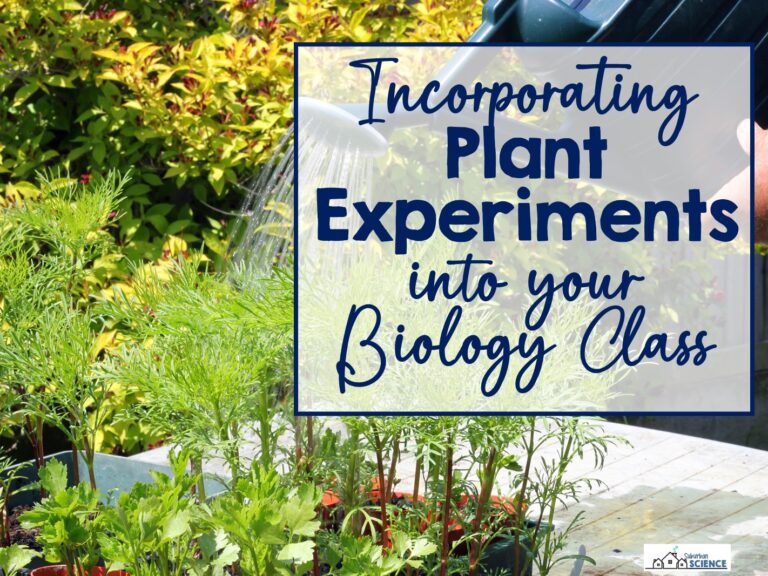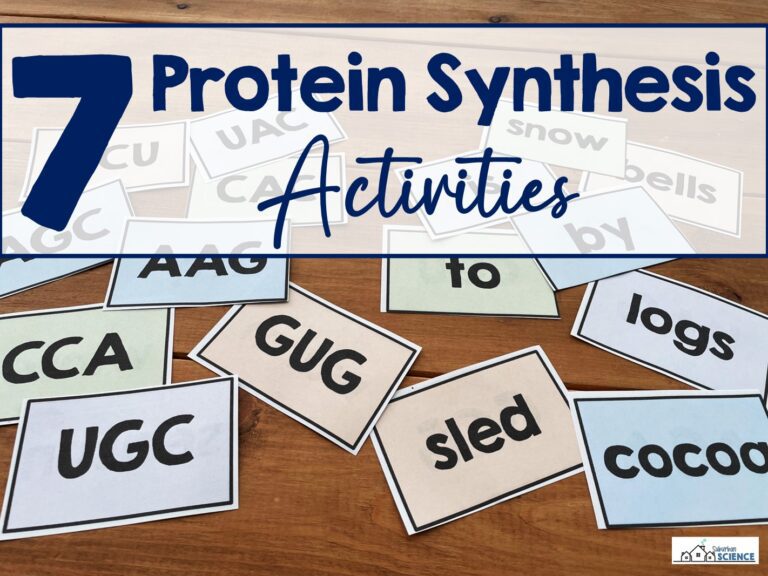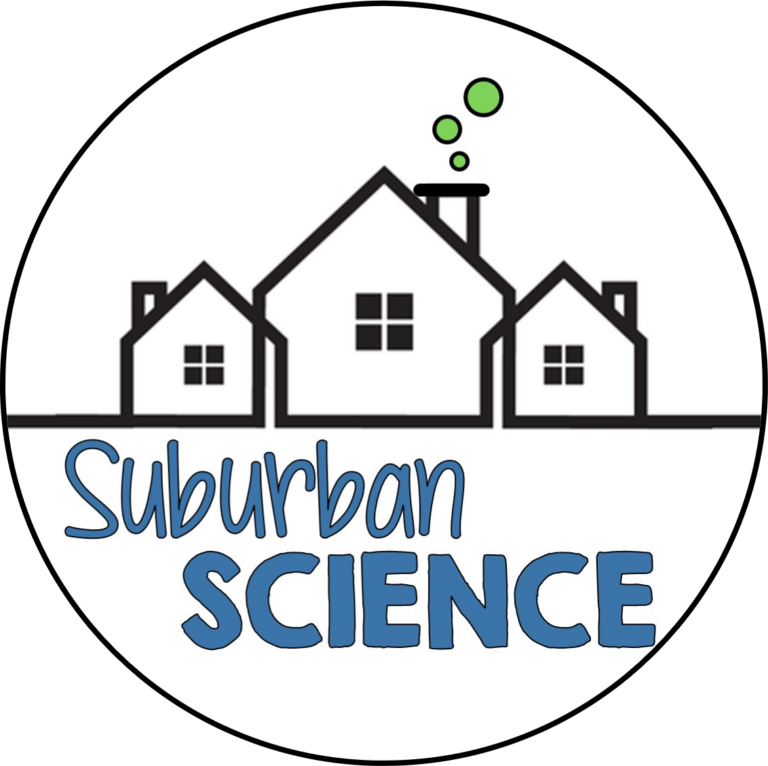I know what you’re thinking- how can the use of Biology PowerPoints possibly boost student engagement? Sure, lectures and presentations have been widely criticized for their one-sided nature in the high school science classroom. Although students are certainly benefiting from science standards that are increasingly focused on more experiential science, Biology PowerPoints can still be an effective tool for your classroom when used correctly.

I’ve seen a number of teachers starting to use “exploration station” notes. These are pages of information that are printed and spread around the classroom like a gallery walk. Students then walk to each page and copy information into their notebooks. Although this may initially seem like a good alternative to teacher-led presentations, it’s often not the best use of class time and certainly not the most effective way to introduce a new concept. I often use lab stations in my science classes, but I don’t feel this is the best way to address note-taking for high schoolers.
Although station notes may seem like a good alternative, they aren’t the best use of class time and certainly not the most effective way to introduce a new concept.
5 Reasons to Ditch the Station Notes:
1. Too much text per slide.
Imagine that struggling reader in your class wandering over to the notes page and seeing huge blocks of text. They know everyone around them can read faster than they do, so they give up immediately to prevent being singled out by their peers. Instead of reading the information, they just copy from the straight-A student standing beside them.
2. Sharing pages makes note-taking tougher.
Unless you’re blowing those notes up to poster size, I bet you have a group of students all clamoring for the same page of information. Not only can this be counterproductive for note-taking, but it can also cause behavior problems. Students standing around in groups without the ability to accomplish the teacher-requested task makes classroom management much more challenging.
3. Varying amounts of work at each location.
Students are usually given a specific amount of time to spend at each note station. It’s very difficult, however, to make the amount of work identical. This means some groups will finish taking notes quickly while others rush to get the information recorded. This situation can be frustrating for students and may lead to additional behavior problems.
4. Reviewing notes afterward takes additional time.
Picture this- you’ve just spent 30 minutes allowing your students to record notes from their station pages and you’re pretty sure they didn’t pick up on some of the concepts you had hoped they would. To ensure they’ve really paid attention to the concepts instead of just going through the motions, you gather them back together and start reviewing the notes they just recorded. Your brighter students are going to tune out and the struggling students likely will, too, because they’ve already recorded all the information on their notes pages. Any talking you’re doing is probably going in one ear and out the other and all that time you thought you saved by not lecturing is spent reviewing information they’ve already read.
5. Learning is passive.
While the act of walking from one set of notes to another involves some movement, station notes are inherently passive for both teachers and students. Frequently, students read and record content with little interaction. I believe this makes this note-taking method appealing for teachers who are less experienced with the content. They aren’t expected to answer student questions or provide explanations other than what is already listed in the notes.
Deliberately planned presentations and interactive lectures are a better alternative to provide new content for students in an efficient and engaging way. I know lectures can be terrifying for new teachers and boring professors have given them a bad reputation, but here are 3 ways I think teacher-led presentations can really be an asset to your Biology classroom.
3 Ways PowerPoints Can Boost Student Engagement:
1. Incorporating multimedia elements.
Biology PowerPoints don’t have to be boring! We’ve all experienced professional development or college professors who fill slides with text and read directly from them. Although text can be particularly important for high schoolers learning how to take notes, lecture points should be brief and easy to read. Other components like images, videos, animations, and simulations can help to reinforce the text and keep students interested. That’s why each full science curriculum provided by Suburban Science includes succinct pieces of text and full-color images. Teacher notes include optional videos and simulations to elevate your presentations.
2. Opportunities for clarification and elaboration.
Teachers are always looking for ways to make content more relevant for their students. With experience comes the ability to relate theoretical concepts to real-world scenarios and everyday situations. Many teachers are also able to incorporate personal narratives and analogies that help students understand concepts more easily and enhances their retention of the material.
3. Interaction maintains student attention.
Just because PowerPoints are teacher-led doesn’t mean your students don’t get to talk. If you have a good relationship with your students, they’re likely to ask clarifying questions as you present new information. Are you familiar with the saying “If one student has a question, others probably do, too”? Answering student questions during your presentation allows for all students to hear your explanation, providing better comprehension overall. Purposefully breaking up presentations with discussions, think-pair-share questioning, or collaboration also encourages peer-to-peer interactions that boost engagement and teamwork among students.
Whether you’re a new teacher who was just thrown into a new prep or a veteran teacher with years of experience, I hope you’ll practice using lectures and presentations in your Biology classroom. With some intentional planning, they can be a fantastic way to introduce new concepts and vocabulary into your classroom without sacrificing student engagement.
Don’t have time to make engaging presentations for all your Biology units? Grab this bundle of ready-to-use Biology PowerPoints and guided notes and you’ll be all set for the rest of the year!






